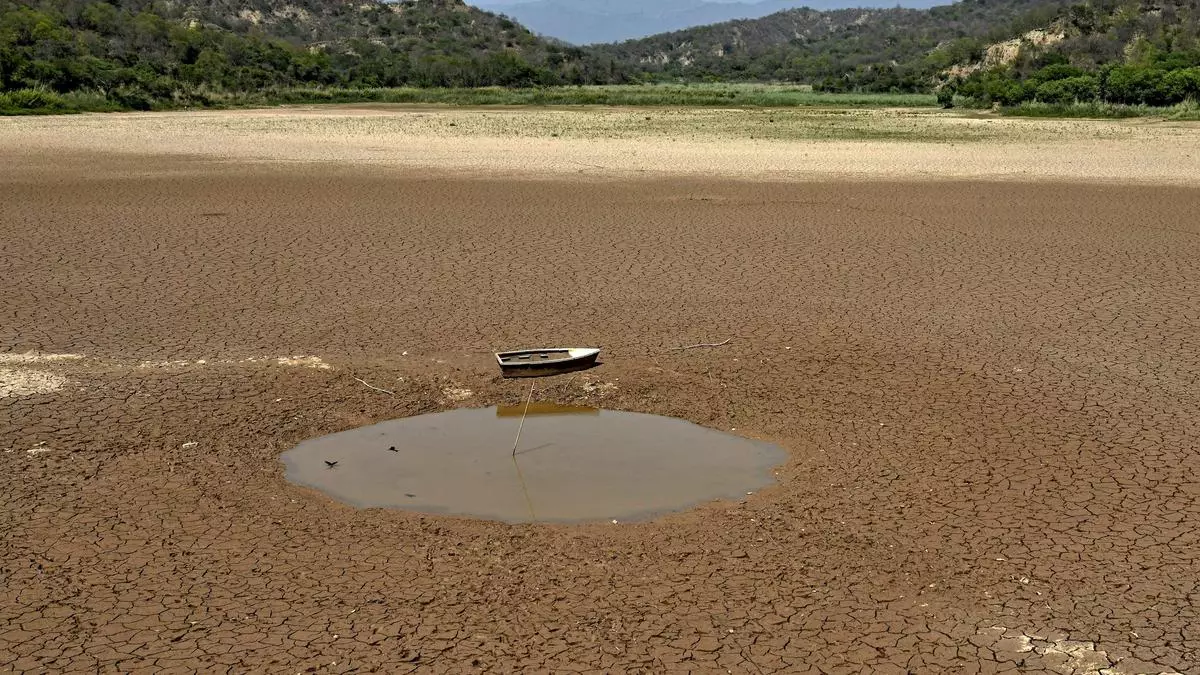Reservoirs in only 6 Indian States have above normal water storage
The water level in the 150 major reservoirs declined for the 37th week in a row with the south-west monsoon playing truant after setting in early, data from the Central Water Commission (CWC) showed.
However, the situation continued to improve in the South, particularly in Kerala and Karnataka. Only six States — Gujarat, Assam, Jharkhand, Madhya Pradesh, Kerala and Uttarakhand — have above normal reservoir storage.
Down to 21% of capacity
The CWC said in its live storage status of 150 reservoirs in the country that the level in major dams declined to 21 per cent of the 178.784 billion cubic metres (BCM) at 37.622 BCM. The situation is against storages being filled to 80 per cent of the capacity in the year-ago period and 91 per cent on average over the last 10 years .
Barring the southern region, which has received higher than normal rainfall during the current monsoon, the other regions witnessed a drop in their reservoir levels.
With the Kandeleru reservoir receiving inflows from the monsoon, which set in early this year on May 30, the number of dams that went dry dropped to six from seven. However, the level in 137 (139 last week) of the reservoirs is lower than 50 per cent of the capacity. Of these, the storage in 128 is below 40 per cent.
According to the India Meteorological Department (IMD), the monsoon was 17 per cent deficient as of June 20. The issue is that the north-west and central parts of the country, which are the main kharif producing regions, received 63 per cent and 33 per cent rainfall, respectively, below normal.
Kharif sowing delayed
Even the east and north-east received 4 per cent deficient rainfall while the surplus precipitation in the southern region declined to 13 per cent above normal.
The monsoon set in two days ahead of its schedule, but there has been a pause causing concern particularly on the agricultural front. Kharif sowing has been delayed as a result, going by reports from various States.
Paddy, oilseeds – mainly soyabean-, pulses and coarse cereals could be affected, while crops such sugarcane and cotton could face stress, experts said.
On its part, the IMD has revised its outlook for the monsoon in June from “normal” to “below-normal”. However, rains are expected to revive and the country could witness above-normal showers from June.
Lower storage
According to CWC’s weekly storage data, the storage in Himachal Pradesh, Punjab, Madhya Pradesh, Rajasthan, Maharashtra, Uttar Pradesh, Chhattisgarh, Telangana, Andhra Pradesh and Tamil Nadu besides combined reservoirs for Telangana and Andhra Pradesh was lower.
In the 42 reservoirs of the southern region, the level increased to 16 per cent of the 53.334 BCM capacity at 8.508 BCM. The storage in Tamil Nadu continued to be 51 per cent below normal, while in Karnataka the deficiency shrunk to 6 per cent less than usual from 21 per cent. In Andhra, too, the below normal situation improved from -80 per cent to -73 per cent.
Kerala had 8 per cent more than normal storage, while in Telangana it was 3 per cent below normal.
In the 10 reservoirs of the northern region, the reservoirs’ level was 28 per cent of 5.488 BCM of the 19.663 BCM capacity. In Punjab, the storage was 28 per cent lower than normal.
IMD kindles hopes
In the eastern region’s 23 reservoirs with a capacity of 20.430 BCM, the storage was 3.873 BCM (19% of capacity). The level in Odisha was 27 per cent, in Bihar 57 per cent and in West Bengal 30 per cent below normal, respectively.
In the 49 reservoirs in the western region, the water level was 20.49 per cent of the 37.130 BCM at 7.608 BCM. Maharashtra, where many small and medium dams have gone drop, had a 17 per cent below normal storage.
In the Central region’s 26 reservoirs with a capacity of 48.227 BCM, the level was 12.185 BCM (25 per cent). The storage in Uttar Pradesh was 23 per cent and Chhattisgarh 34 per cent below normal.
Hopes for an improvement in the situation hinge on the IMD predicting the advancement of the monsoon to Odisha, Vidharbha, Chhattisgarh, West Bengal and Bihar.
